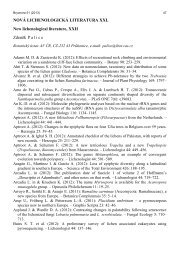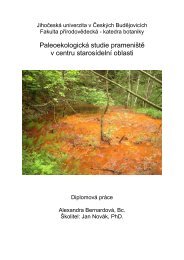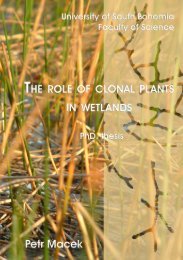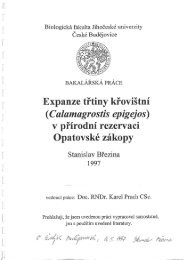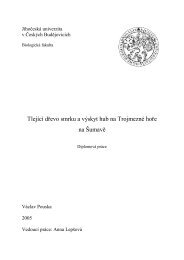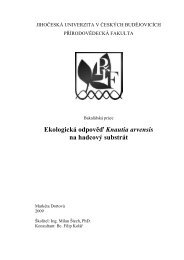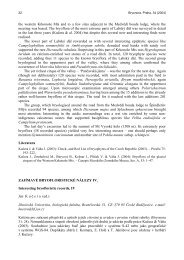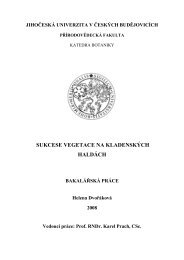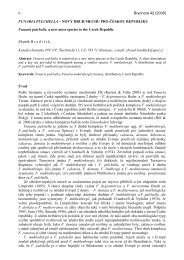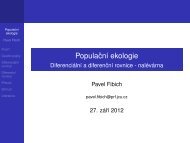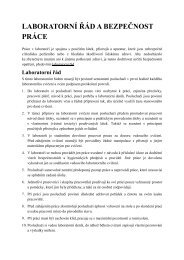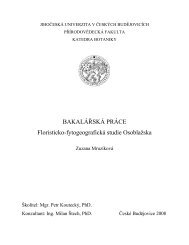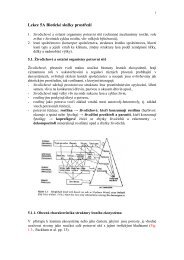Molecular phylogeny and taxonomic revision of chaetophoralean ...
Molecular phylogeny and taxonomic revision of chaetophoralean ...
Molecular phylogeny and taxonomic revision of chaetophoralean ...
You also want an ePaper? Increase the reach of your titles
YUMPU automatically turns print PDFs into web optimized ePapers that Google loves.
Introduction 10<br />
The CBC species concept, introduced by Coleman <strong>and</strong> co-workers, is based on the<br />
presence <strong>of</strong> a Compensatory Base Change (CBC; double sided change which still<br />
retains pairing ability, e.g. C-G A-U) in the conservative regions <strong>of</strong> the secondary<br />
structure <strong>of</strong> the second Internal Transcriber Spacer (ITS2). Based on crossing<br />
experiments in several organisms, it has been revealed that the presence/absence <strong>of</strong> even<br />
a single CBC in Helix 2 or 3 corresponds to incompatibility/inability to sexually cross<br />
<strong>and</strong> thus determines the limit between biological species (Fabry et al. 1999, Coleman<br />
2000). In contrast, the presence <strong>of</strong> a hemi-compensatory base change (hCBC; single<br />
sided change which retains pairing ability, e.g. C-G U-G) in conservative parts <strong>of</strong><br />
ITS2 theoretically still allows mating, <strong>and</strong> therefore is not useful in resolving species<br />
differences. In other words, the CBC species concept is based on the comparison <strong>of</strong> the<br />
secondary structures <strong>of</strong> ITS2 between two taxa, <strong>and</strong> when at least one CBC in the<br />
conserved parts <strong>of</strong> the helices is found, these two taxa are considered to be two different<br />
species. The ITS2 region has now become a widely-utilized DNA marker for algae,<br />
fungi, plants, <strong>and</strong> also animals to distinguish among ‘biological species’ (e.g. Coleman<br />
2005, Coleman <strong>and</strong> van Oppen 2008, Ahvenniemi et al. 2009, Coleman 2009,<br />
Agnarsson 2010, Fawley et al. 2011). Furthermore, according to Müller et al. (2007)<br />
‘the correlation between the presence <strong>of</strong> CBCs <strong>and</strong> the species concept occurs<br />
independently <strong>of</strong> reproduction <strong>and</strong> mating affinities’, i.e. it can be used to distinguish<br />
species whether they exhibit sexual reproduction or not.<br />
Although, many different theoretical <strong>and</strong> practical ‘species concepts’ have been<br />
established (summarized in Mayden 1997, Wheeler <strong>and</strong> Meier 2000) until now, no<br />
completely-satisfactory, general definition <strong>of</strong> the species concept exists.



